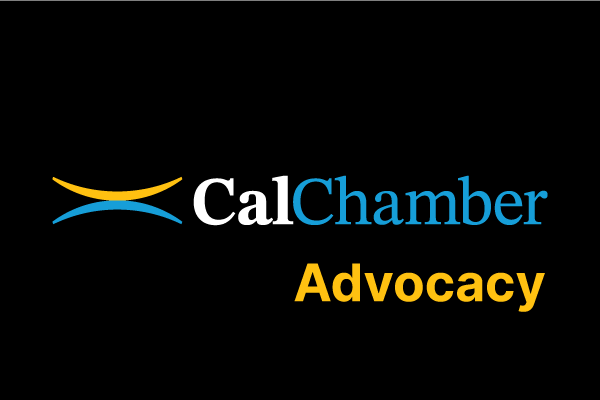Uber Marketing Strategy (2025)
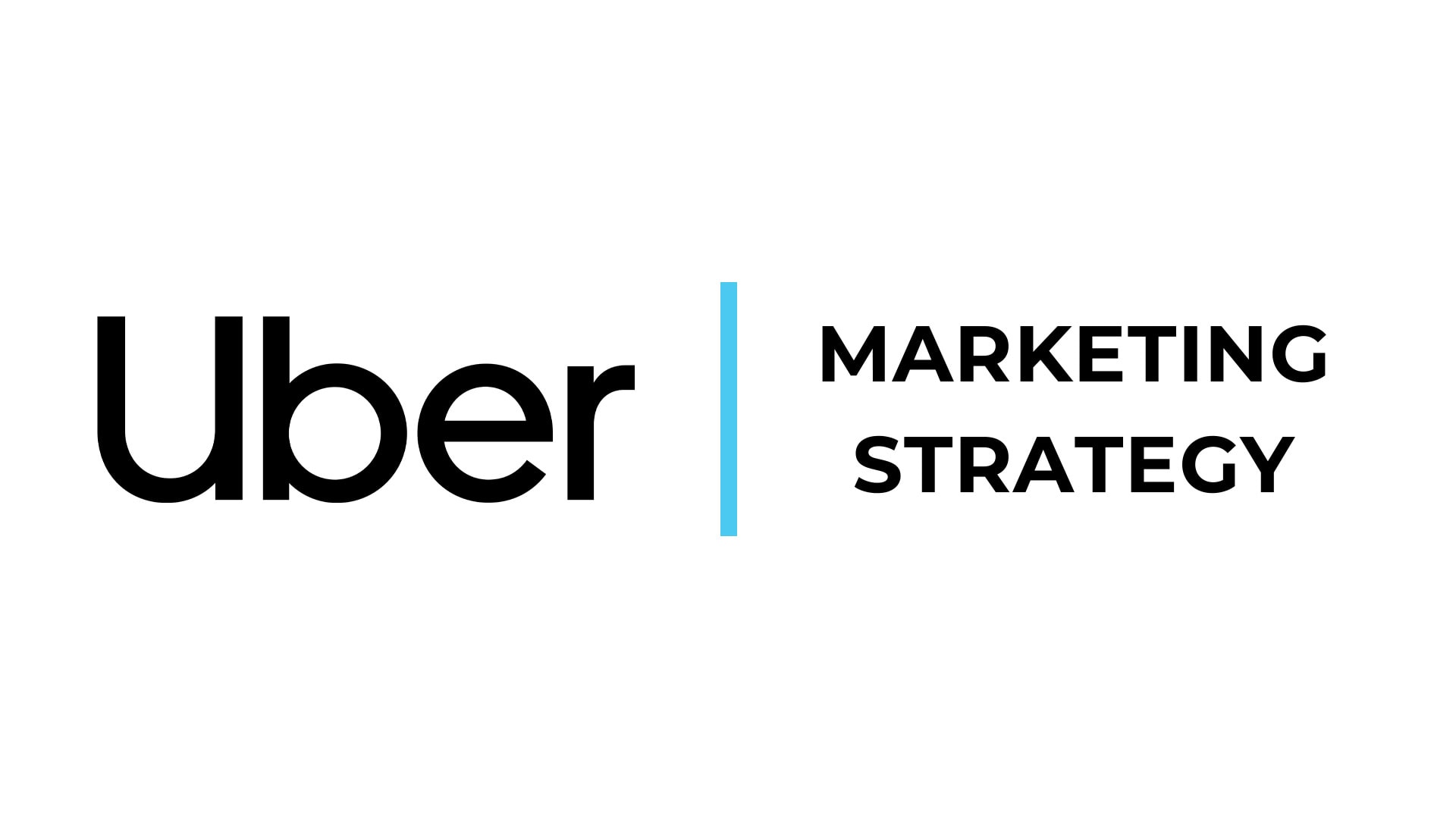
The Uber Marketing Strategy is a data-driven, customer-centric approach that combines innovative technology with hyperlocal execution to dominate the ride-hailing industry. Uber’s strategy centers on solving urban mobility issues while leveraging convenience, pricing flexibility, and brand familiarity to attract and retain users worldwide.
You can explore more about the business model of Uber to understand how these elements come together strategically.
Founded in 2009 in San Francisco, Uber has revolutionized transportation by offering an on-demand ride service accessible through a mobile app. It expanded rapidly, entering markets across six continents and diversifying its portfolio with food delivery (Uber Eats), freight (Uber Freight), and more. Uber’s innovation, coupled with aggressive scaling and deep market penetration, has made it a pioneer in the gig economy.
What sets Uber apart is its ability to blend technology with everyday utility. While traditional taxi services focused on dispatch and meters, Uber reimagined the entire experience—from route optimization to driver-partner ratings. Its seamless app interface, cashless transactions, and real-time tracking created a modern transport solution aligned with the digital era.
Uber’s rise reflects a broader shift toward personalized, app-based convenience. As consumers increasingly prioritize ease, speed, and control, Uber has positioned itself not just as a transportation company but as a lifestyle enabler—responding to evolving urban needs with flexibility and scale.
Uber’s Goals and Objectives
Uber’s marketing and business goals center around scalability, loyalty, innovation, and global influence. By merging user convenience with advanced technology, Uber seeks to redefine urban transportation while expanding its service portfolio and market presence.
1. Enhance Brand Loyalty and Trust
Uber strives to build long-term relationships with both riders and drivers. Loyalty programs like Uber Rewards encourage repeat usage through perks and tiered benefits. Reliable service, safety features, and consistent quality help nurture trust across user segments.
2. Expand Market Presence Globally
Uber continues to target international markets, adapting its services to meet regional regulations and cultural preferences. For instance, in India, it introduced cash payments to address local habits, while in Europe, it complies with stricter transportation laws to maintain operations.
3. Increase Multi-Platform Usage
With Uber Eats, Uber Freight, and even package delivery via Uber Connect, the company aims to integrate into more aspects of consumers’ daily lives. By encouraging users to switch between offerings within the app, Uber boosts its customer lifetime value.
4. Drive Customer Engagement Through Personalization
Uber uses behavioral data to personalize promotions and recommendations. A frequent evening commuter might receive a ride discount after 6 p.m., increasing the likelihood of continued usage. This tailored engagement enhances user satisfaction and retention.
5. Attract and Retain Drivers
Marketing also targets gig workers. By showcasing earning potential, flexibility, and bonus incentives, Uber appeals to a broad base of driver-partners—vital to keeping the platform functional and competitive.
6. Innovate Through Technology
From dynamic pricing to in-app safety tools, Uber continually invests in tech-driven improvements. Its marketing communicates these innovations clearly, positioning Uber as a forward-thinking brand committed to smarter mobility.
7. Promote Sustainable Practices
Uber is pushing toward becoming a zero-emission platform by 2040. Campaigns like “Uber Green” promote rides in electric or hybrid vehicles, aligning the brand with eco-conscious users and global sustainability goals.
Who is Uber’s Target Audience?
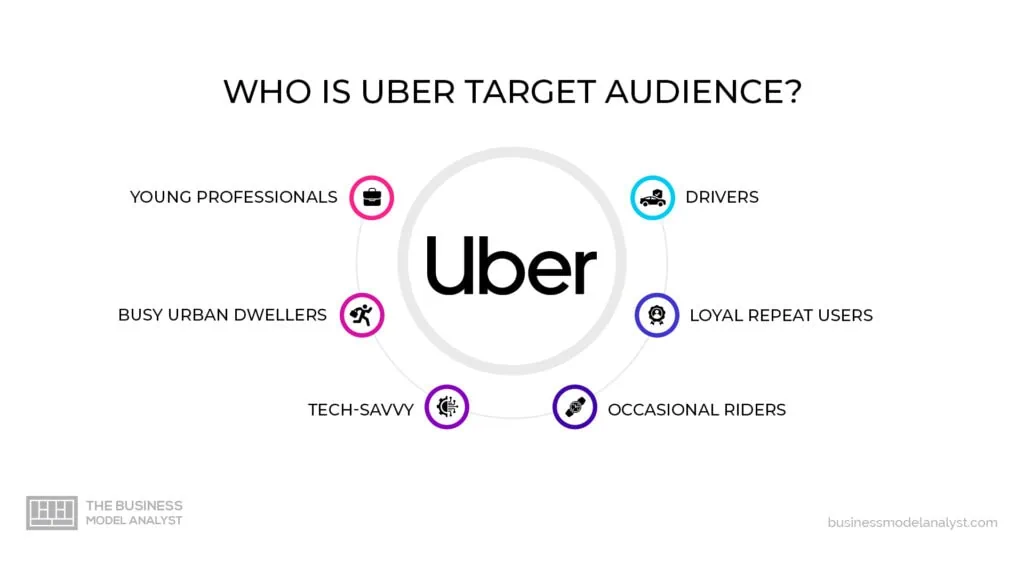

Uber’s target audience spans a wide range of users united by a need for convenience, efficiency, and affordability. Through segmentation based on demographics, psychographics, geography, and behavior, Uber fine-tunes its services and marketing to resonate deeply with key customer profiles.
Uber Demographics
Uber primarily targets adults aged 18–45. This includes students, young professionals, and busy urban dwellers who value time over ownership. Income levels vary, as Uber offers options from budget-friendly UberPool to premium Uber Black. Gender-neutral by nature, its service appeals equally to all.
Uber Psychographics
Uber appeals to people who are tech-savvy, convenience-driven, and flexible. Many are value-conscious but also appreciate upgrades for comfort and status. These users often balance a fast-paced lifestyle—working, socializing, and traveling—which makes Uber a seamless solution in their routine.
Uber Geography
Uber operates globally but tailors offerings to local markets. In densely populated cities like New York or São Paulo, it’s a daily commuter tool. In suburban or developing regions, it may serve as an occasional convenience or even a safer alternative to local transport.
Localization is critical—Uber Eats menus change per city, and ride types are introduced based on demand, infrastructure, and regulations. For instance, motorbike rides are common in Southeast Asia, while electric vehicles are prioritized in Europe.
Uber Behavior
Uber’s audience includes loyal repeat users and occasional riders. Many use it for daily commutes, airport transfers, or nights out. The app’s ease fosters impulse usage—especially when discounts are offered. Behavioral targeting allows Uber to nudge users back with time-sensitive offers or ride predictions.
Meanwhile, another behavioral segment—drivers—also represents a core audience. Uber markets flexibility, earnings, and driver support tools to onboard and retain this group.
By deeply understanding and adapting to the preferences of its varied audience, Uber maintains its relevance and loyalty across both global and local scales.
Marketing Mix of Uber
Uber offers a wide range of services tailored to specific user needs—budget, luxury, or utility. This flexibility is a core strength noted in the SWOT analysis of Uber, where its product ecosystem, pricing strategy, and promotional methods are evaluated.
Uber Product
Uber offers a wide range of services, from ride-hailing (UberX, UberPool, Uber Black) to food delivery (Uber Eats), and freight logistics (Uber Freight). Each service is tailored for specific user needs—budget, luxury, or utility. Innovations like Uber Reserve (scheduled rides) and Uber Green (eco-friendly options) expand the product ecosystem, reflecting Uber’s commitment to convenience and customization.
Uber Price
Uber uses dynamic pricing, adjusting fares based on demand, time, and traffic. This model balances supply and demand, incentivizing drivers during peak hours while managing rider expectations. Promotions and discounts help retain price-sensitive users. Tiered services (economy to premium) allow Uber to attract a wide income range, making affordability flexible and scalable.
Uber Place
Uber’s services are accessed entirely through its app, making it a mobile-first, global platform. It doesn’t rely on physical outlets, but its presence spans 70+ countries and thousands of cities. Strategic partnerships—like airport pickup zones, retail drop-offs, and fast-food chains via Uber Eats—extend its footprint to where users naturally are.
Uber Promotion
Uber’s promotions blend digital ads, influencer campaigns, email offers, and referral incentives. Launch campaigns often use local influencers and customized content to build trust. Uber also invests in public relations by highlighting safety features, green initiatives, and driver success stories—positioning itself as more than just a ride, but a movement.
By combining personalized tech with strategic pricing and hyperlocal outreach, Uber’s marketing mix ensures global reach and local impact.
What are Uber’s Strategies?
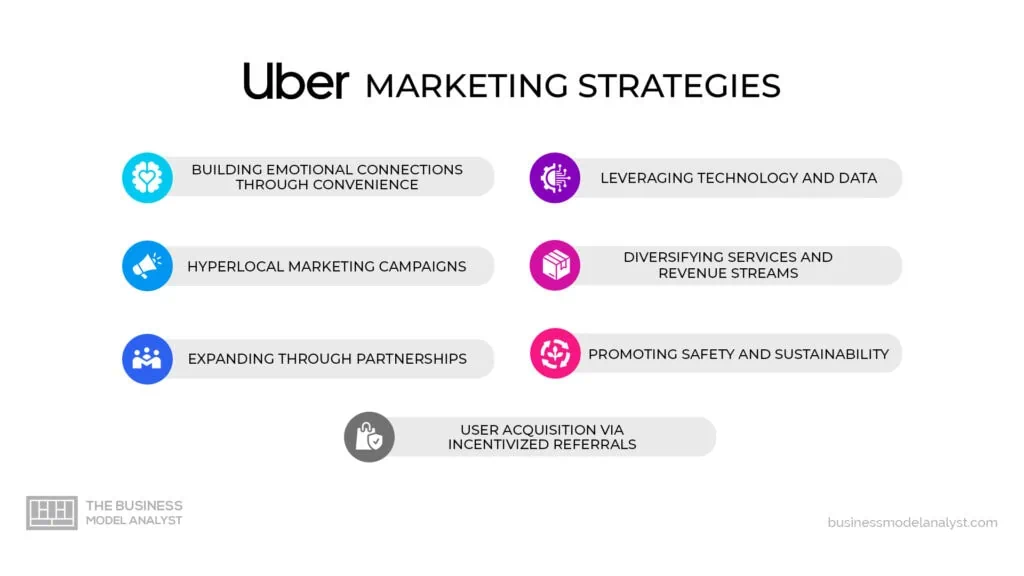

Building Emotional Connections Through Convenience
Uber markets itself as more than transportation—it’s a personal assistant for mobility. Whether it’s a ride home on a rainy night or a late-night food craving, Uber is there. These moments forge an emotional connection, positioning Uber as a dependable lifestyle partner.
Hyperlocal Marketing Campaigns
Uber tailors campaigns to local markets, using native languages, regional influencers, and culturally relevant messaging. In India, Uber highlighted female safety features; in Brazil, it partnered with musicians to resonate with youth culture. This localization strengthens brand relevance and trust.
Expanding Through Partnerships
Uber forms strategic alliances with airports, cities, restaurants, and brands like Spotify (in-app music during rides) or Marriott (loyalty integrations). These partnerships not only enhance the user experience but expand Uber’s visibility and ecosystem integration.
Leveraging Technology and Data
Uber thrives on its ability to harness real-time data for decisions—from pricing to route optimization. It uses machine learning to predict user needs, personalize offers, and streamline matching between riders and drivers, reinforcing its image as a tech-forward company.
Diversifying Services and Revenue Streams
From Uber Eats to Uber Freight, the company continues to diversify. Each vertical strengthens the brand’s ecosystem, making it part of users’ lives in multiple ways. This reduces reliance on a single revenue stream and builds resilience.
Promoting Safety and Sustainability
Uber’s campaigns increasingly focus on rider and driver safety (like in-app emergency buttons) and eco-conscious services like Uber Green. These initiatives align with global consumer trends around responsibility and transparency.
User Acquisition via Incentivized Referrals
One of Uber’s earliest and most powerful strategies was its referral system. Riders and drivers receive credits for bringing in others, fueling exponential growth. It’s still used today to penetrate new markets and spark word-of-mouth marketing.
These strategies, executed with agility and localized insight, help Uber maintain its dominance while evolving with user expectations and societal trends.
Uber Channels
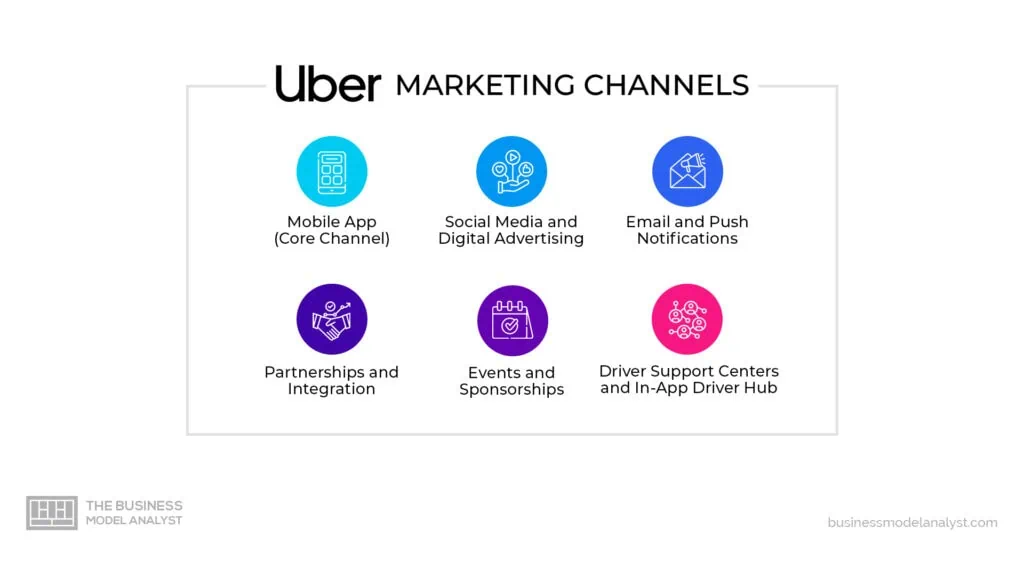

Uber reaches its audience through a mix of digital-first, on-the-ground, and partnership-driven channels designed to maximize accessibility, engagement, and trust.
These Uber distribution channels play a critical role in ensuring that both riders and drivers can interact with the platform in ways that are intuitive, localized, and scalable.
Mobile App (Core Channel)
The Uber app is its central touchpoint, hosting all services—rides, delivery, freight, and even grocery. Its intuitive interface simplifies access and ensures user retention. Real-time updates, personalization, and seamless payments make the app an essential channel for daily interaction.
Social Media and Digital Advertising
Uber leverages Instagram, X (formerly Twitter), YouTube, and TikTok for announcements, influencer campaigns, and service education. These platforms allow hyper-targeted ads and real-time community engagement. Campaigns like “Move What Matters” during the pandemic emphasized Uber’s social role.
Email and Push Notifications
Uber uses personalized emails and app notifications to share discounts, ride reminders, and new features. This channel supports behavior-triggered marketing—such as sending a ride offer after food delivery or alerting riders of price drops during commute hours.
Partnerships and Integration
Uber integrates with services like Google Maps, Spotify, and local hotel booking sites. These integrations allow users to request Uber rides within other apps, extending reach without extra user acquisition costs.
Events and Sponsorships
Uber sponsors local events (concerts, festivals, marathons) with dedicated pickup zones and discounts, increasing real-world brand presence. These activations introduce Uber to new users and create memorable brand associations.
Driver Support Centers and In-App Driver Hub
For drivers, Uber offers physical Greenlight Hubs and digital resources. These channels help with onboarding, support, and training—enhancing loyalty and ensuring operational efficiency.
Uber’s multichannel strategy ensures the brand is not just accessible but actively present across user touchpoints, both digital and physical.
How to Apply Uber Strategies to Your Business
1. Solve Real Problems with Seamless Tech
Uber thrives because it solves a simple problem—getting from point A to B—through a frictionless app. For your business, identify a core customer pain point and use technology to streamline the solution. Tools like mobile apps, chatbots, or digital booking can elevate user experience and drive loyalty.
2. Use Data to Personalize Engagement
Uber sends ride offers when it predicts a user may need a trip. Likewise, use customer data to craft timely, personalized messages—whether through email, SMS, or in-app. Platforms like Mailchimp or Klaviyo can help you automate this personalization to increase engagement and repeat purchases.
3. Leverage Incentives and Referrals
Uber’s growth was powered by rewarding users to refer others. Implement a similar program by offering discounts or rewards when customers bring in new business. Software like ReferralCandy or Yotpo can automate referral tracking and payouts, making it easy to grow organically.
4. Think Local, Act Global
Uber adjusts its services to fit each region—accepting cash in India or promoting Uber Green in Europe. Similarly, tailor your offerings to local tastes and preferences while maintaining a consistent brand identity. This helps build relevance and trust in diverse markets.
5. Expand Service Verticals Thoughtfully
Uber added Eats, Freight, and package delivery based on user behavior. If customers love one aspect of your brand, explore complementary services. A café might offer catering; a fitness brand might launch apparel. Test new offerings before scaling widely.
6. Promote Trust and Transparency
Uber’s focus on safety features and transparent pricing builds confidence. In your business, ensure clear communication, easy access to support, and public reviews or testimonials. These elements reduce friction in decision-making and improve credibility.
7. Create Strategic Partnerships
From Spotify integration to Marriott loyalty perks, Uber leverages collaborations. Partner with brands that share your audience but offer non-competing services—this expands reach while adding value for your customers.
By adopting Uber’s adaptable, tech-smart, and customer-first strategies, businesses of any size can scale smarter, engage deeper, and build long-term loyalty.
Conclusion
Uber has reshaped the transportation industry through a blend of bold innovation, customer-first design, and hyperlocal execution. Its marketing strategy focuses on solving real-world problems with simplicity and scale, making it a leader in both ridesharing and digital services.
What makes Uber exceptional is its ability to adapt—across cultures, market demands, and consumer behavior. From launching sustainable options to introducing new verticals, Uber shows that relevance and agility are key to long-term success. For businesses seeking growth and customer loyalty, Uber offers a powerful blueprint grounded in technology, trust, and value-driven experiences.
link




